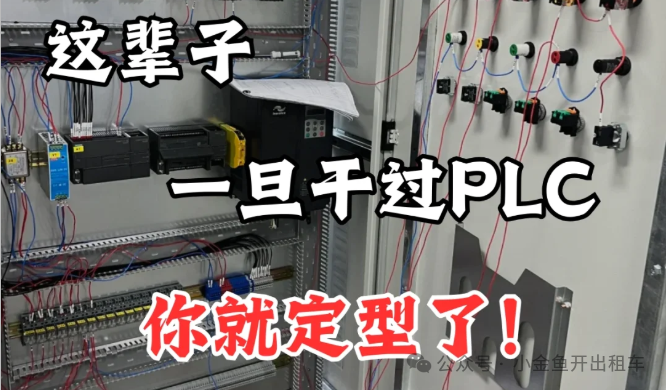
Comparison of PLC Protocols: Analyzing the Pros and Cons of Mainstream Communication Protocols for Rational Selection of the Best Solution!
Introduction
Hello everyone! Today we are going to discuss a topic that automation engineers both love and hate — the selection of PLC communication protocols.<span>"Why is my device always experiencing communication instability?"</span> and <span>"Which protocol is best suited for my project?"</span> Are these questions troubling you as well? Don’t worry, today I will use the simplest language to help you fully understand the pros and cons of mainstream PLC communication protocols, assisting you in making the most rational choice!
Why are Communication Protocols So Important?
Imagine that PLCs and peripheral devices are like a group of people from different countries.<span>If there is no common language (protocol), they cannot communicate effectively!</span> Choosing the wrong protocol may lead to:
-
Communication Delays: Like a stuttering conversation, severely affecting real-time performance
-
Compatibility Issues: Devices “talking past each other” and unable to understand one another
-
Maintenance Difficulties: Discovering that the protocol does not support new devices during later expansions
Comparison of Mainstream PLC Communication Protocols
1. Modbus Protocol
<span>The "veteran" of industrial communication</span>
-
Advantages:
-
<span>Simple and Reliable</span>: The protocol structure is simple and easy to implement -
<span>Strong Compatibility</span>: Almost all PLCs support it -
<span>Low Cost</span>: No additional licensing fees required -
Disadvantages:
-
<span>Relatively Slow</span>: Not suitable for high-speed applications -
<span>No Built-in Security Mechanism</span>: Vulnerable to network attacks -
<span>Limited Functionality</span>: Only supports basic data read/write
Applicable Scenarios:<span>Small control systems</span>, <span>Retrofitting old equipment</span>, <span>Budget-constrained projects</span>
2. PROFINET
<span>The "ace player" of Germany's Industry 4.0</span>
-
Advantages:
-
<span>Strong Real-time Performance</span>: Supports synchronization control accurate to 1ms -
<span>High Bandwidth</span>: Up to 100Mbps or even 1Gbps -
<span>Integrated Diagnostic Functions</span>: Quickly locates fault points -
Disadvantages:
-
<span>Higher Cost</span>: Requires specialized hardware and licensing -
<span>Complex Configuration</span>: Requires professional training -
<span>Primarily Siemens Ecosystem</span>: General compatibility with other brands is limited
Applicable Scenarios:<span>Large automation production lines</span>, <span>Applications requiring precise synchronization</span>, <span>Siemens-dominated systems</span>
3. EtherNet/IP
<span>The "universal solution" of the American Industrial Internet</span>
-
Advantages:
-
<span>Based on Standard Ethernet</span>: Utilizes existing network infrastructure -
<span>Supports Multiple Devices</span>: PLCs, HMIs, drives, etc. -
<span>Good Scalability</span>: Easy to add new devices -
Disadvantages:
-
<span>Average Real-time Performance</span>: Not as good as PROFINET -
<span>Network Load Sensitive</span>: Requires good network management -
<span>High Protocol Overhead</span>: Affects communication efficiency
Applicable Scenarios:<span>Mixed device environments</span>, <span>Systems requiring integration with enterprise networks</span>, <span>Projects primarily using Rockwell devices</span>
4. CANopen
<span>The "lightweight champion" of mobile devices</span>
-
Advantages:
-
<span>Strong Anti-interference</span>: Suitable for harsh industrial environments -
<span>Good Real-time Performance</span>: Deterministic communication -
<span>Low Cost</span>: Simple hardware implementation -
Disadvantages:
-
<span>Limited Bandwidth</span>: Maximum 1Mbps -
<span>Network Scale Limitations</span>: Number of nodes generally does not exceed 64 -
<span>Complex Configuration</span>: Requires in-depth understanding of the protocol
Applicable Scenarios:<span>Mobile machinery</span>, <span>Distributed I/O systems</span>, <span>Automotive electronics applications</span>
Protocol Selection Decision Tree
Still struggling with how to choose? Try this simple decision-making process:
-
<span>What is your project budget?</span>
-
Tight → Modbus
-
Ample → PROFINET or EtherNet/IP
<span>How high does the real-time requirement need to be?</span>
-
Millisecond-level → PROFINET
-
Second-level → Modbus or EtherNet/IP
<span>What is the brand composition of the devices?</span>
-
Primarily Siemens → PROFINET
-
Primarily Rockwell → EtherNet/IP
-
Mixed brands → EtherNet/IP or Modbus
<span>Future expansion needs?</span>
-
High → EtherNet/IP
-
Low → Choose based on other conditions
Case Study Analysis
Case 1: An automotive welding production line
-
Requirements:
<span>High synchronization accuracy</span>,<span>Primarily Siemens equipment</span>,<span>Ample budget</span> -
Selection: PROFINET
-
Result: Achieved **
<span>0.5ms precise synchronization</span>**, welding quality improved by 30%
Case 2: Small packaging machinery
-
Requirements:
<span>Low cost</span>,<span>Simple control</span>,<span>Compatibility with old equipment</span> -
Selection: Modbus RTU
-
Result:
<span>Saved 40% on communication costs</span>, system has operated stably for 5 years without failure
Common Misconceptions and Pitfalls
-
<span>"The latest is the best"</span>→ Not necessarily! The most suitable is the best -
<span>"One protocol rules them all"</span>→ Complex systems may require multiple protocols to coexist -
<span>"Ignoring future expansion"</span>→ Consider the development needs for the next 3-5 years when choosing -
<span>"Neglecting network security"</span>→ Modern protocols need to consider encryption and authentication mechanisms
Hybrid Protocol Solutions
If a single protocol cannot meet all needs, consider:
-
<span>Protocol Gateways</span>: Converting between different protocols -
<span>OPC UA</span>: Serving as a unified interface at a higher level -
<span>Layered Architecture</span>: Use PROFINET for real-time control and EtherNet/IP for data collection
Interactive Questions
-
What communication protocol is currently used in your project? What challenges have you encountered?
-
What factors do you value most when selecting a protocol?
-
If you could choose again, would you change your current protocol solution? Why?
Conclusion
There is no absolute right or wrong in the choice of communication protocols; the key is the <span>"most suitable"</span>. I hope that through today’s analysis, you can more rationally evaluate the pros and cons of various protocols and choose the <span>best communication solution</span> for your project. Remember, <span>A good communication protocol is like an excellent translator, enabling smooth and unobstructed dialogue between devices!</span>**
If you have more questions or want to share your experiences, feel free to leave a comment for discussion. Let’s work together to create smarter and more efficient industrial automation systems!
ShareSaveViewLike